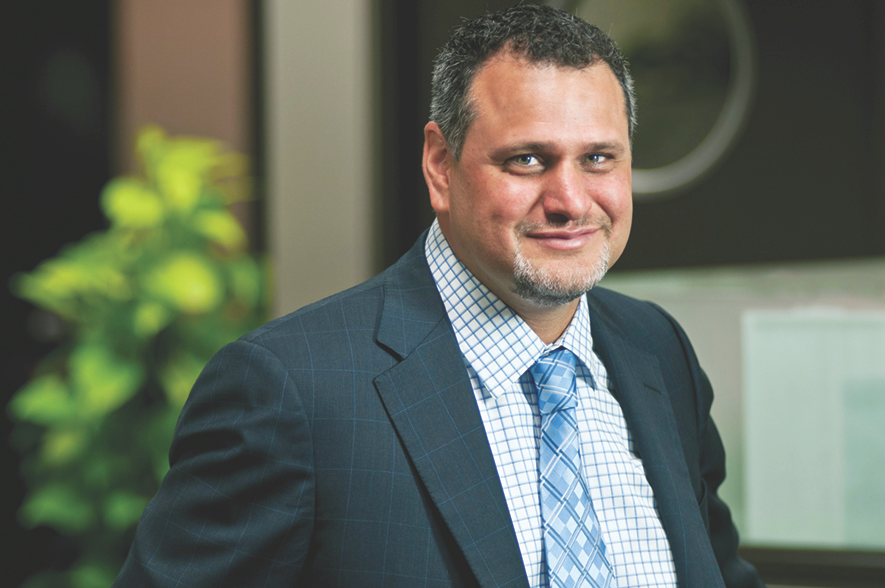Real estate investment trusts (REITs) weighted towards commercial and mixed-use real estate sectors in big Canadian cities could see returns as high as 15 per cent this year, according to the senior managing director, investments, and global head of securities at Timbercreek.
Toronto-based Timbercreek is a global asset-class management firm with more than $7.5 billion in assets under management.
“Large cities in Canada are currently experiencing a wave of gentrification,” Corrado Russo said in an exclusive interview with Western Investor. “This is creating a number of compelling opportunities for REITs to experience outsized growth and offer increasing value for investors.”
Russo defines big cities as Vancouver, Toronto and Montreal and cautioned that there is one metric REIT portfolio managers and investors should watch if considering smaller centres: population growth.
Many smaller cities may have stable income from commercial real estate, he said, but REITs require the growth in returns and valuations that comes only with an expanding population, including high immigration.
Mortgage rates
Russo takes a counterintuitive approach, however, when it comes to rising mortgage rates, which are traditionally seen as a drag on REIT performance.
“The empirical evidence shows that at the beginning of an interest rate hike, REITs do poorly because of the intuition that rising rates are bad for real estate income,” he explained. “But when rates actually start rising, REITs outperform because interest rates are typically going up because the economy is doing well: GDP is strong, there is a low unemployment rate, and inflation potential on the horizon. These are all very good for cash flow, and the increase in REIT cash flow outweighs the cost of capital and higher mortgage rates.”
He noted that after three Bank of Canada interest rate hikes in the past year, most REITs are trading at discounts to what the underlying assets could be sold for. This is particularly true in REITs weighted towards retail real estate, he said.
Retail plays
There is a lot of negative news about retail assets, he said, but there is also opportunity because they can be trading at deep discounts.
“Some retail will fail,” Russo said, “but much of the retail will survive and thrive.”
He said a key smart REIT managers have found is maximizing the underlying land and location value of retail assets, particularly in urban infill locations.
He pointed to RioCan REIT as an example. Canada’s largest REIT is leveraging transit-oriented retail assets it owns in Calgary and Toronto into mixed-use projects with a substantial mix of residential. In Calgary, RioCan has joined with residential developers in a $70 million mixed-use retail and residential redevelopment at its Brentwood Village Shopping Centre, which is served by Calgary’s light-rail transit.
“There is a global trend of people wanting to live, work and play in the same [urban] location,” he said.
“That strip plaza with a Loblaw’s is going to get torn down, but it will be replaced by offices, condominiums and apartment rentals. The Loblaws may still be there, but in the basement. The retail mix will be towards bars, restaurants, fitness centres and movie theatres, more of a gathering place than somewhere to buy another plasma TV.”
Russo said retail is the single largest real estate sector that Timbercreek is overweighting.
“It is a massive contrarian call,” he conceded, “But it is because [retail] is being priced as is with the retail in place, not to the potential of redevelopment as the highest and best use of the land.”
Despite the success of some Canadian REITs in the U.S. market, such as Vancouver-based Pure Industrial Real Estate Trust, which recently cashed out in a $3.8 billion sale, Russo said it is not necessary for a Canadian REIT to have U.S. exposure.
A REIT investor could be better off buying the local expert in any U.S. real estate sector, he said, rather than a Canadian company expanding into a foreign market.
Russo said Timbercreek had forecast overall REIT returns of 8 per cent to 10 per cent in 2018, based on current lease rates and contractual increases.
But, Russo said, when he overlays the cash flow from equities and other sources into REIT, GDP growth and the potential of adding value through development, “I think we are talking about big double-digit returns in the 12 per cent to 15 per cent range.”



